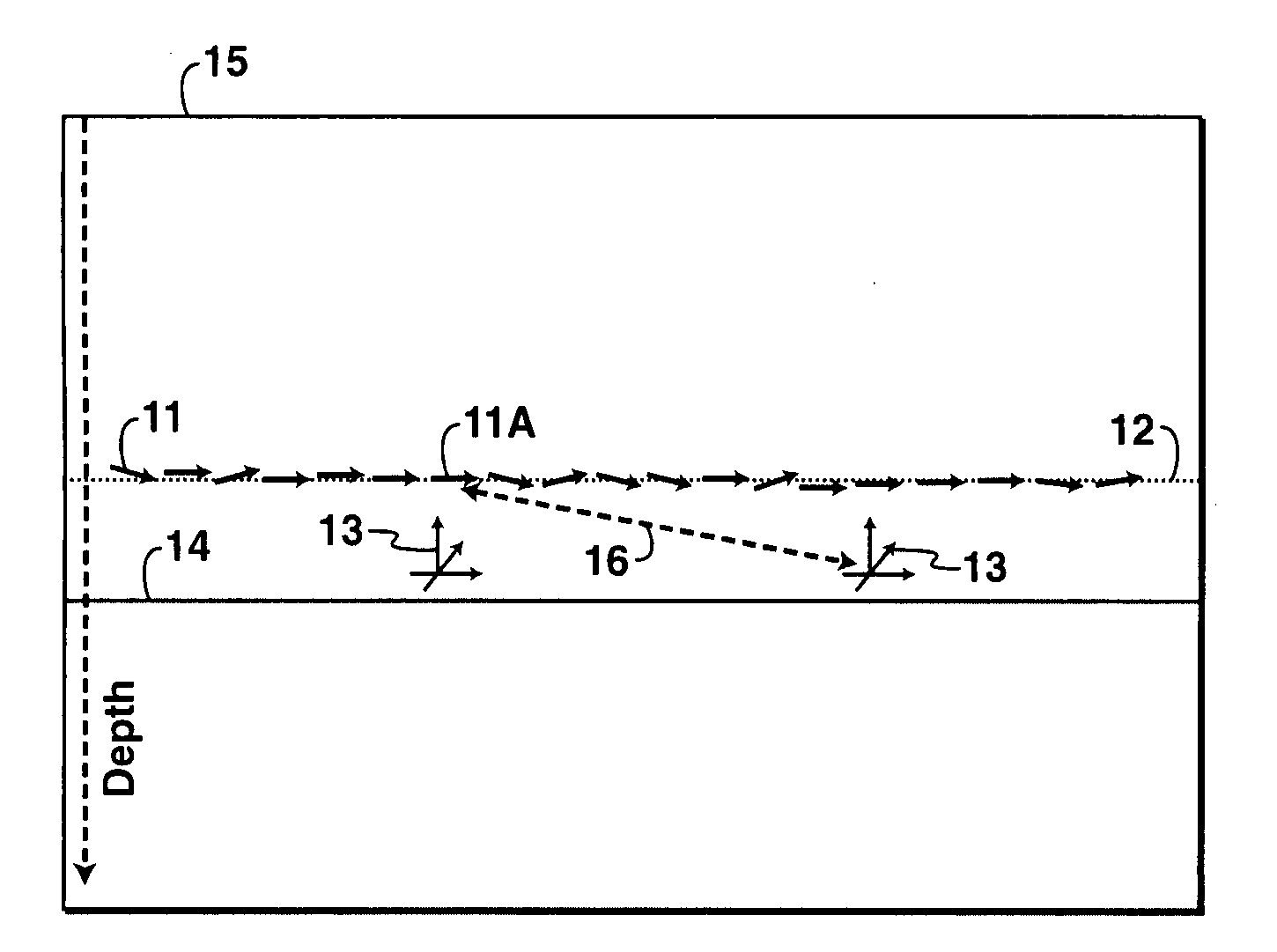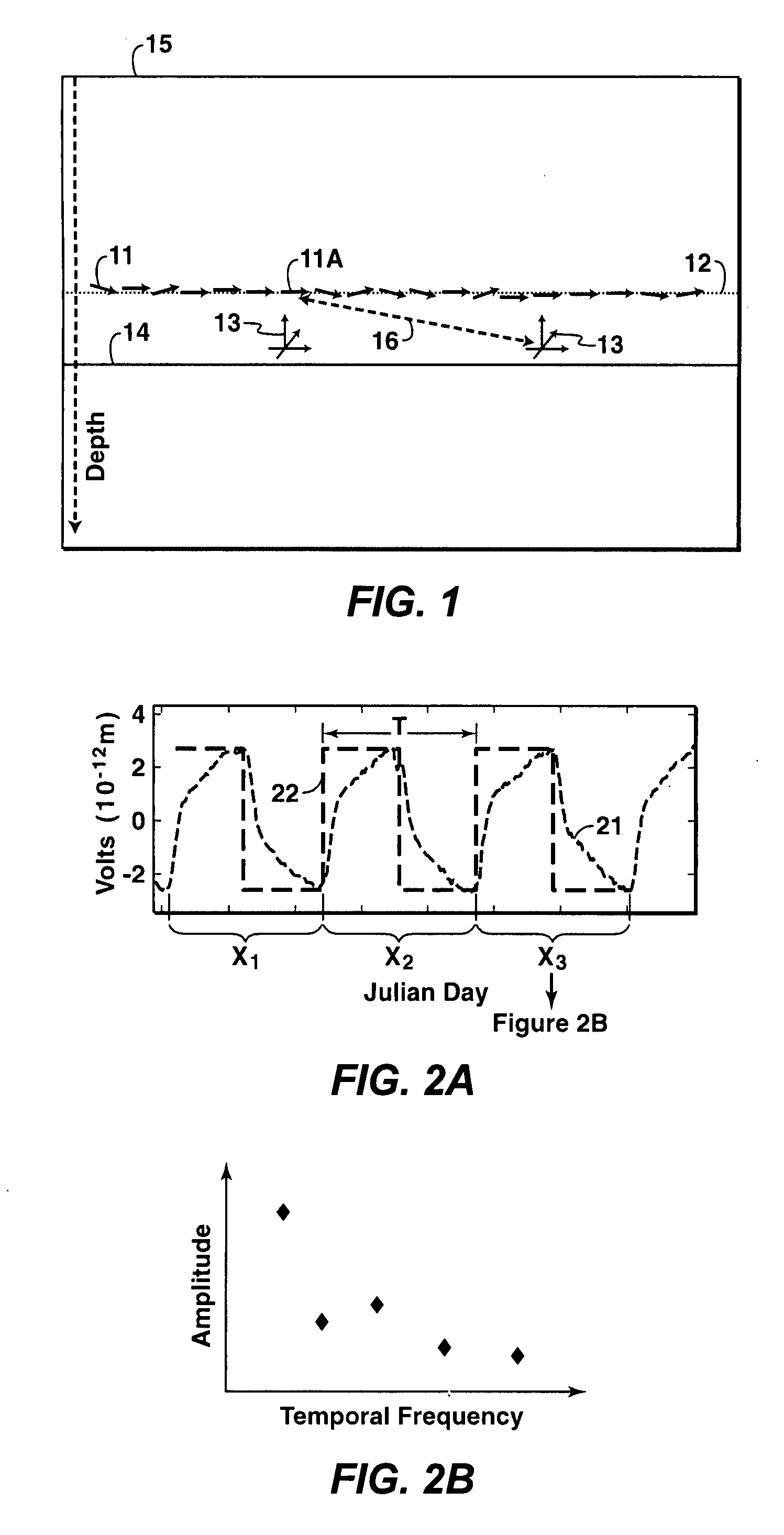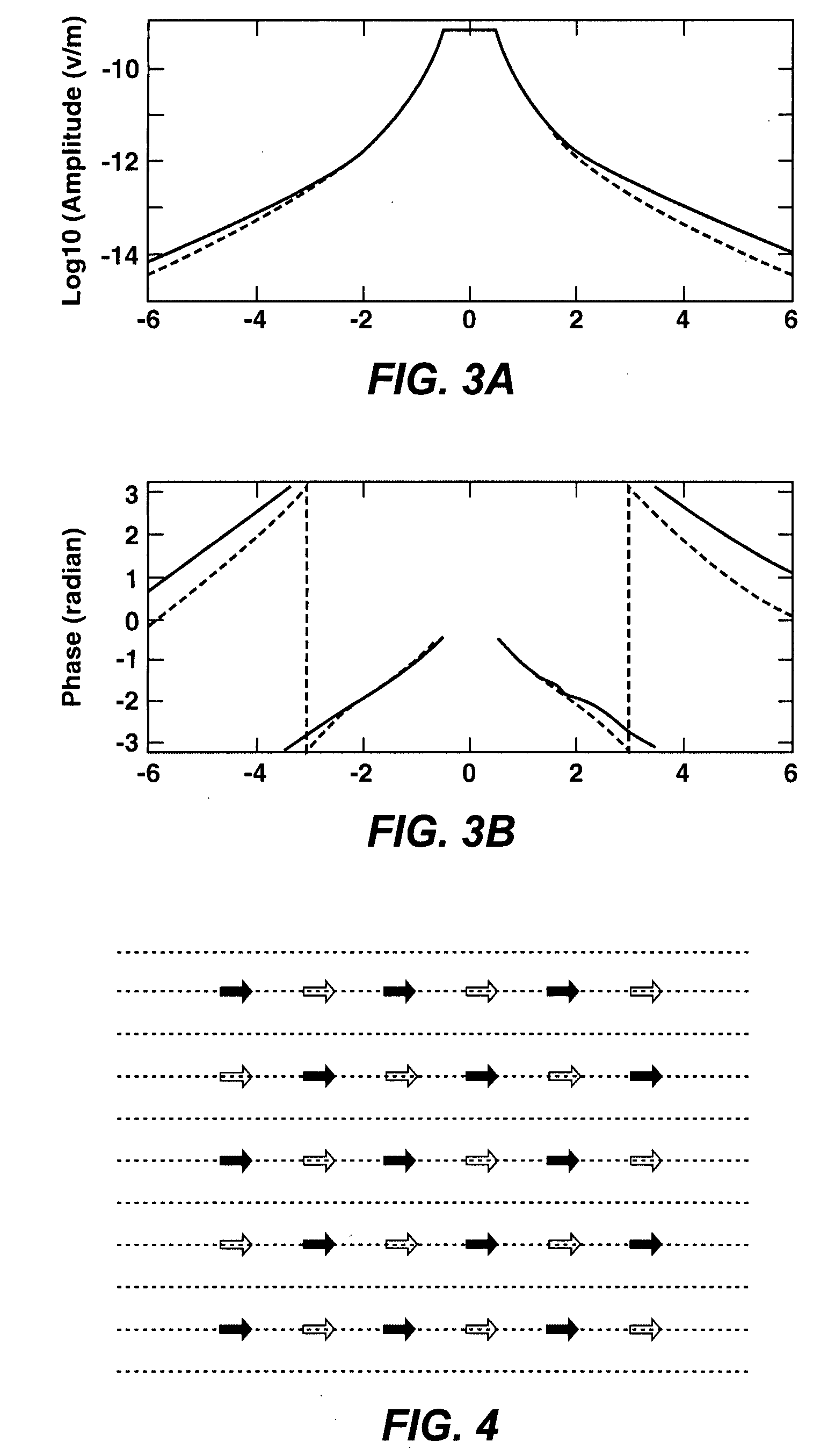Rapid Inversion of Electromagnetic Reconnaisance Survey Data
a reconnaisance survey and electromagnetic technology, applied in seismology for waterlogging, detection using electromagnetic waves, instruments, etc., can solve the problems of ineffective data recording at the nearest offset, inability to accurately record data, and high computational cost of inversion of csem data for the subsurface conductivity
- Summary
- Abstract
- Description
- Claims
- Application Information
AI Technical Summary
Benefits of technology
Problems solved by technology
Method used
Image
Examples
example
[0080]A synthetic CSEM dataset was generated using a three-dimensional resistivity model. The amplitudes and phases versus transmitter coordinate in kilometers along the transmitter towline in one of the horizontal receiver gathers are shown at two different frequencies (as indicated on the plots) by solid curves in FIGS. 13A and 13B, respectively. A multi-receiver-gather dataset was created by summing the individual horizontal-component synthetic gathers. The amplitudes and phases for one of the multi-receiver gathers are shown by solid curves in FIGS. 13C and 13D, respectively. The original gather shown in FIGS. 13A and 13B is one of the original individual gathers forming the multi-receiver gather shown (at x≈12 km) in FIGS. 13C and 13D.
[0081]The inversion described in this invention was performed on the multi-receiver-gather dataset. The initial model for the inversion and final model from the inversion were then used in forward modeling the electric fields. Data modeled by usin...
PUM
 Login to View More
Login to View More Abstract
Description
Claims
Application Information
 Login to View More
Login to View More - R&D
- Intellectual Property
- Life Sciences
- Materials
- Tech Scout
- Unparalleled Data Quality
- Higher Quality Content
- 60% Fewer Hallucinations
Browse by: Latest US Patents, China's latest patents, Technical Efficacy Thesaurus, Application Domain, Technology Topic, Popular Technical Reports.
© 2025 PatSnap. All rights reserved.Legal|Privacy policy|Modern Slavery Act Transparency Statement|Sitemap|About US| Contact US: help@patsnap.com



